OK talk is cheap so here we go.
I got around to measuring today and wound up with sets of measurements.
Here are the constants:All speakers are mounted in a sealed enclosure of equal volume, with exception of the Zimo as it came with an enclosure already attached.
The speakers are all sealed to their enclosures with silicon.
Any of the speakers not pointing through the floor, were pointing forward through the front of the tender with the exception of the dual speaker test which had one facing forward at the front of the enclosure, and facing backwards at the rear of the enclosure.
The speaker enclosures are all sealed to the frames with silicon.
Enclosed tender, and tender with the front open to the cab refer to the tender body that fits over the speaker enclosure.
The bodies were not sealed to the frames.
The tender frames were suspended above a piece of track at the height they would be at on trucks to provide the same reflection.
The same amplifier and volume settings were used for each test.
All speakers are 8 ohm impedance.
In the dual speaker tests the speakers were wired in parallel resulting in a 4 ohm amplifier load
Each speaker received a maximum of 1 watt of power.
The mic was placed at the same location for each test.
Even if a tender body was used that did not project sound forward into the cab, the cab was placed in front to provide for the most uniform testing.
Testing was done from 200Hz to 20 KHz since these tiny speakers don't produce much usefull sound below 300Hz.
Here's how it was set up during testing. I put the mic in a position where it could collect sound coming from under the tender and also from the front near the cab so that I could use the same mic position for every test.
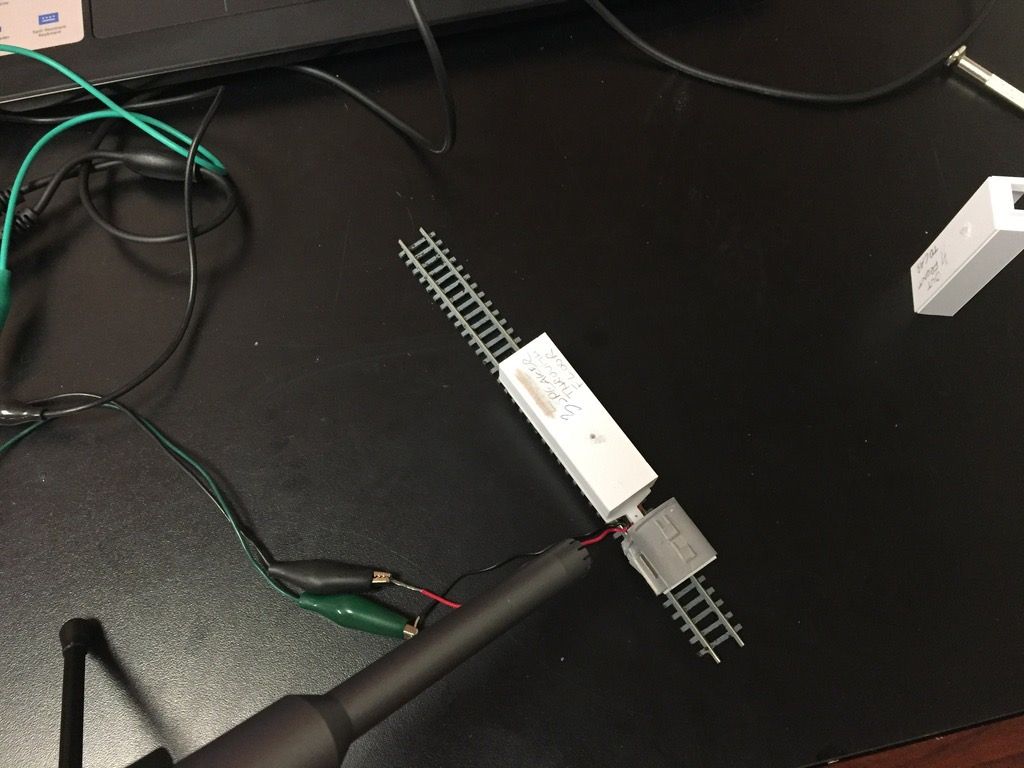 Types of installations tested:
Types of installations tested:There were two types of speaker installations, a speaker mounted in a cut out through the floor, and a speaker mounted inside the tender.
There were two types of tender bodies, one with the sound playing through a tender body with a cut out in the front of the tender, and an enclosed tender body with no purpose made openings.
Combinations of the above mountings and bodies resulted in the combinations I tested.
Cut out in the floor.Knowles-Fox Mounted facing through the floor, with the enclosed tender
Knowles-Fox mounted facing through the floor, with the tender open to the cab
Loksound oval speaker facing through the floor, enclosed tender
Mounted inside the tender, with an enclosed tender bodyZimo Sugarcube
Knowles-Fox single speaker
Knowles Fox pair of speakers
Mounted inside the tender, body open to the cabZimo Sugarcube
Knowles-Fox single speaker
Knowles Fox pair of speakers
Results:On the left side of the results you will see a range of decibels. Decibels are used to measure SPL (Sound Pressure Level), or volume. Decibels are something that have always confused me a little and honestly they are still a bit of mystery to me. They are not an increment of volume, but more like a ratio of one volume level in comparison to anoter. To double the volume equates to an increase of 10dB. Example. 20dB is twice as loud as 10dB. 30dB is twice as loud as 20dB, etc. In car audio we always said that to double the volume you needed 10x the power so 10x the power would in theory yield and increase of 10dB. Doubling your power, or adding a second identical speaker using the same power, would increase 3dB. Good, now that you are as confused as me we can proceed.
Below are the results all plotted together on the same graph.
It looks like a big plate of spaghetti, and so I will be splitting them up for comparison, but it just goes to show you how much of a difference there is in the resukts of each of the tests.
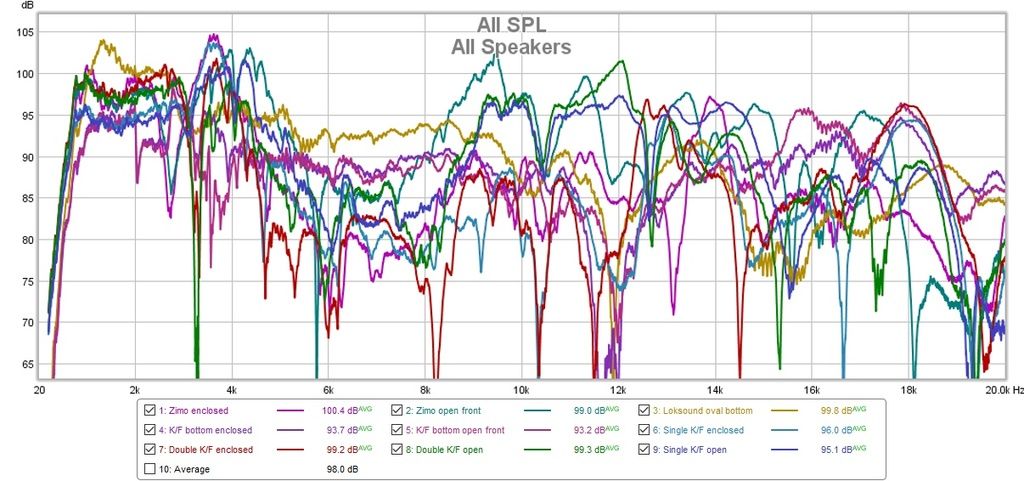
Here is the same graph spread out a little and zoomed in so you can see more definition between each of the results.
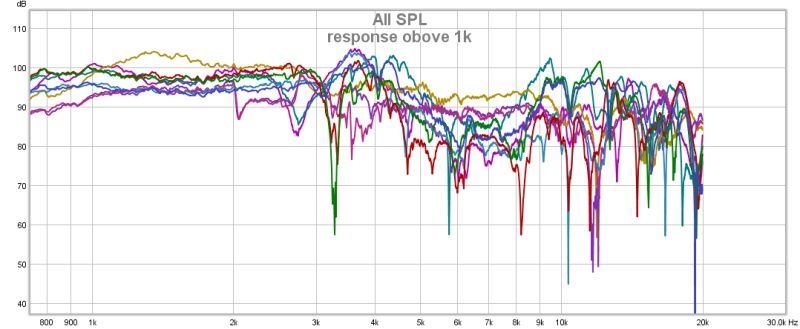
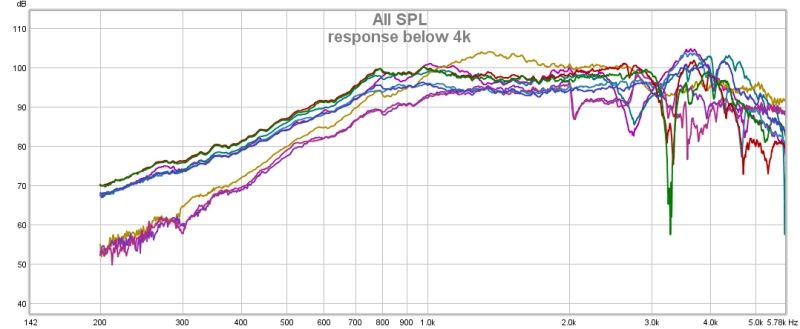
Next is the individual speaker types on their own.
Here are the results for the two Sugar Cube tests.
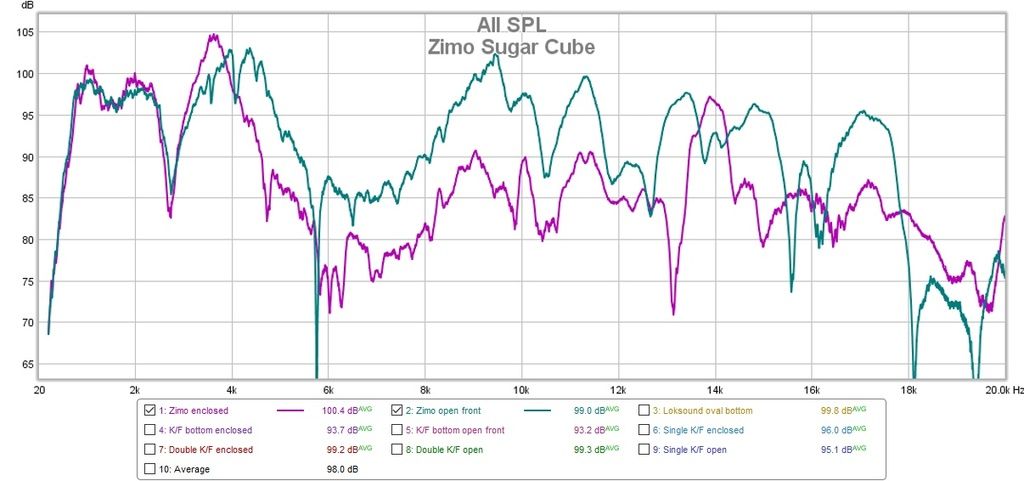
Loksound.
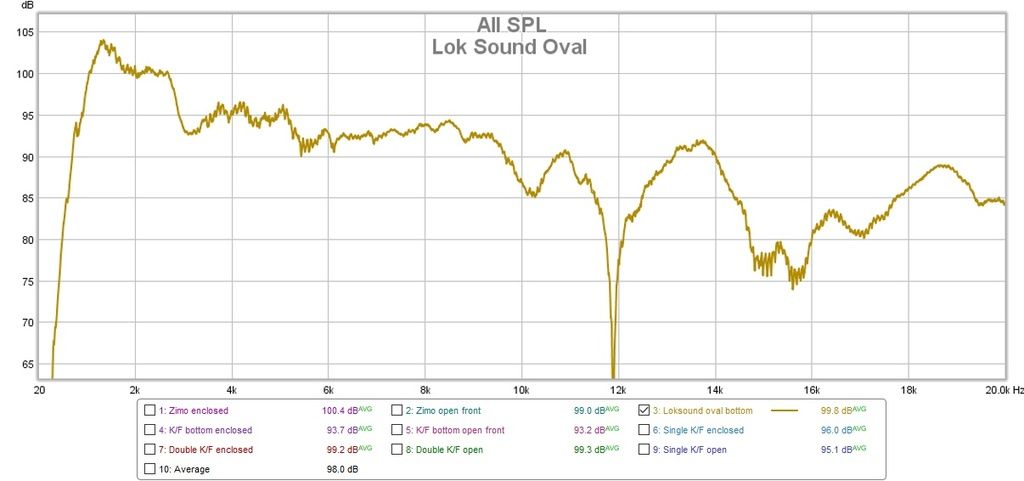
Knowles-Fox through the bottom.

Single Knowles-Fox.
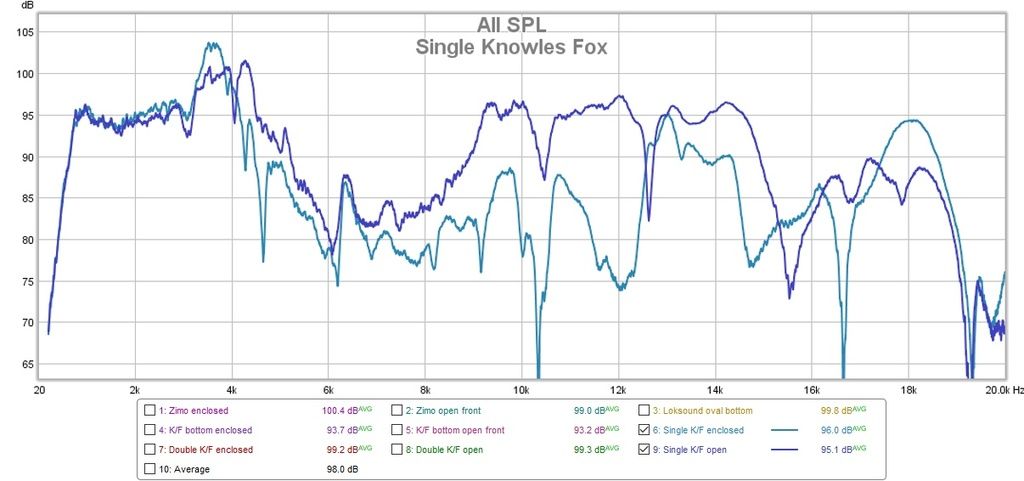
Double Knowles-Fox
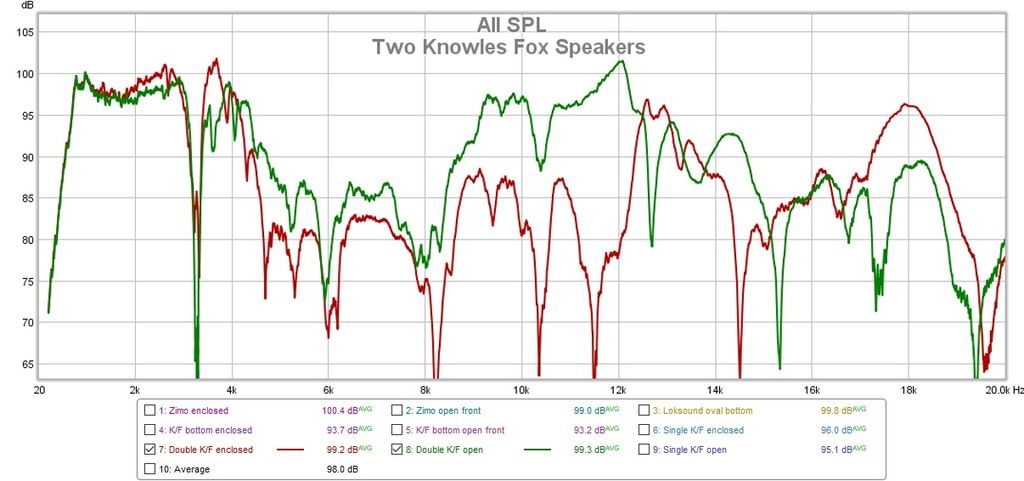
According to the software, the installation with the loudest average SPL was the Sugar Cube in the fully enclosed tender. Keep in mind though that it's a difference of bareley one dB, and this is an average. Huge dips in response at 6k, 18k and 20k ruined the curve. The fact that those frequencies, at such narrow bands, are basically non existent to your ear wouldn't change the volume you hear. Looking at the graph you can clearly see that the open through the front test produced more perceivable volume.
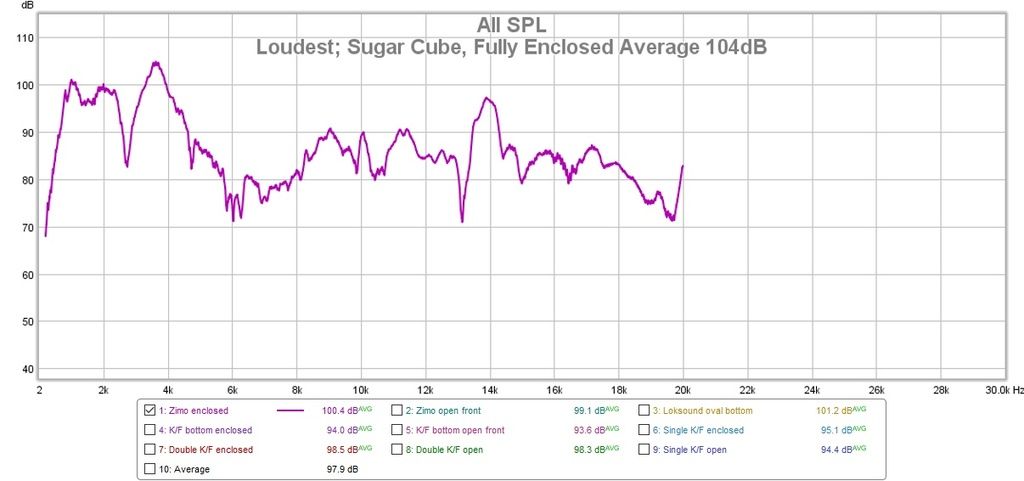
The installation with the lowest SPL was the Knowles-Fox facing out the bottom with an open tender front.
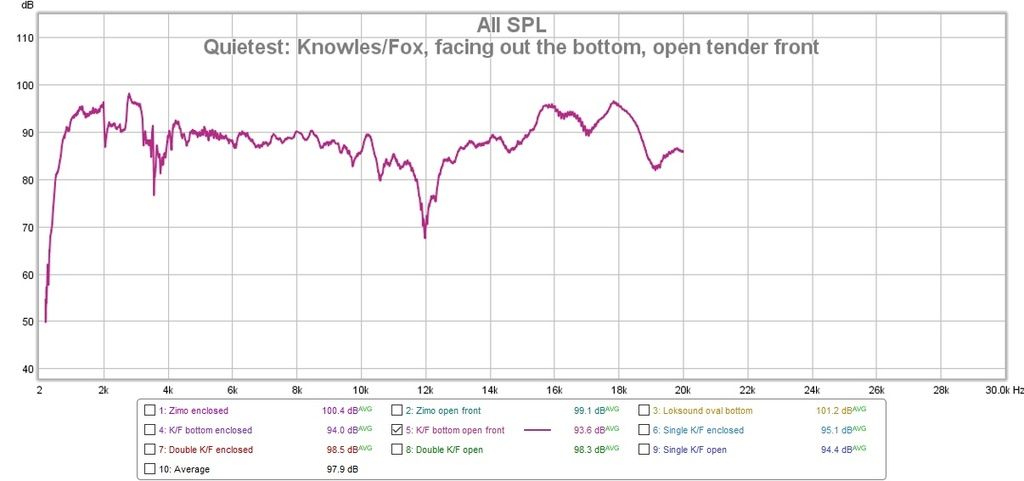
The installation with the flattest frequency response was the Knowles-Fox facing out the bottom with the open tender front.
http://i1203.photobucket.com/albums/bb383/craigolio1/Speaker%20tests/Flatest_zpsmrwdplyk.jpgHere are the best three installation for flat frequency response.
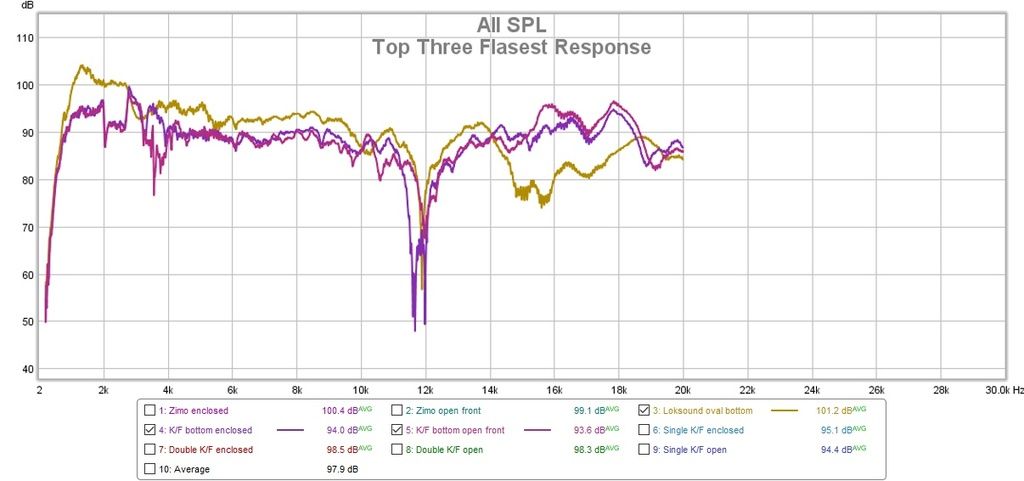
And the worst three.
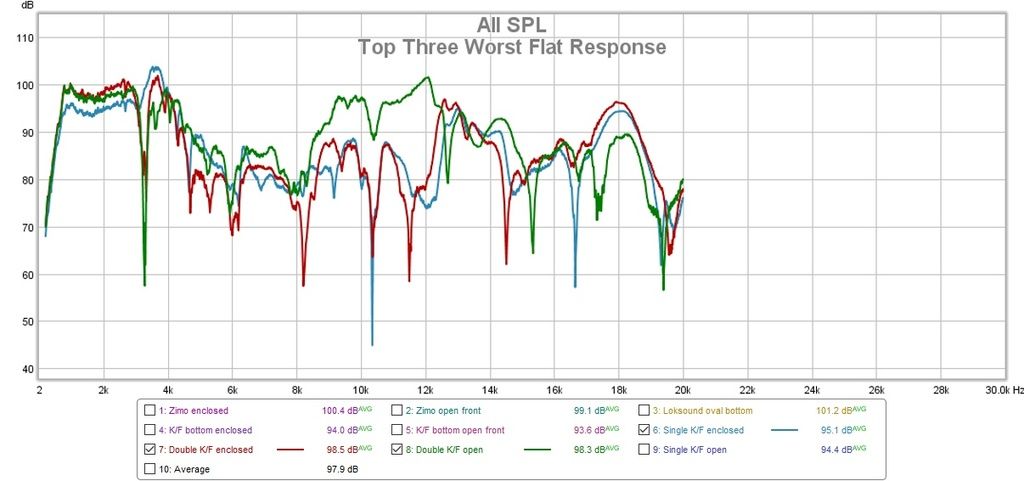
All speakers showing comparison of large dips in response at particular frequencies. Spread over three pictures for better spacing.
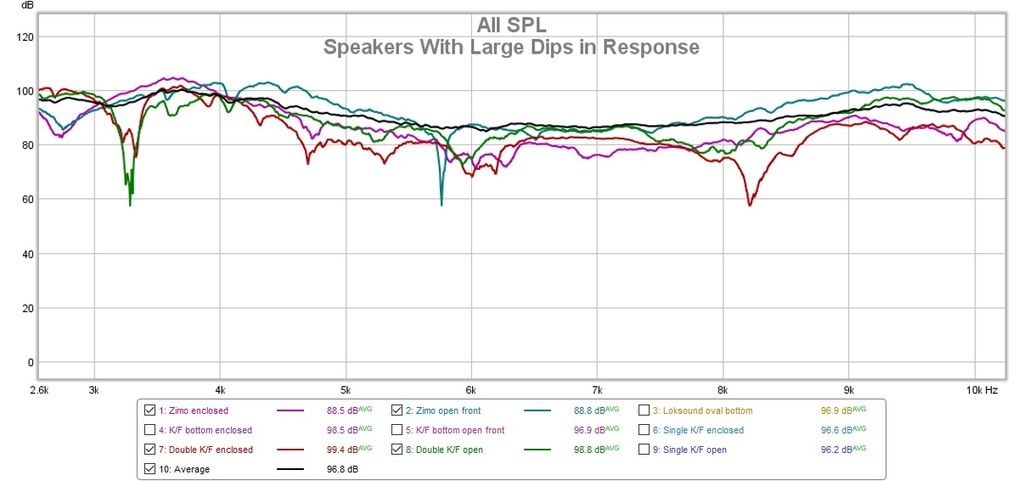
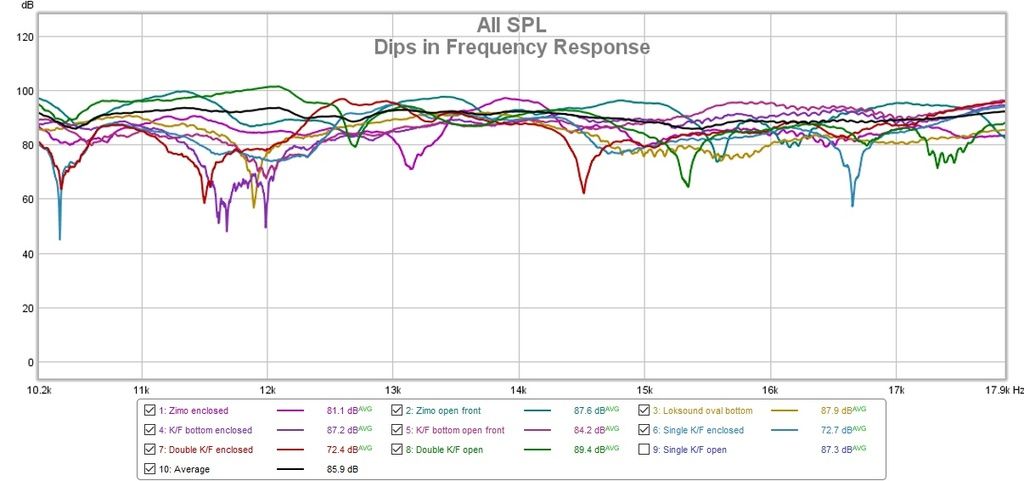
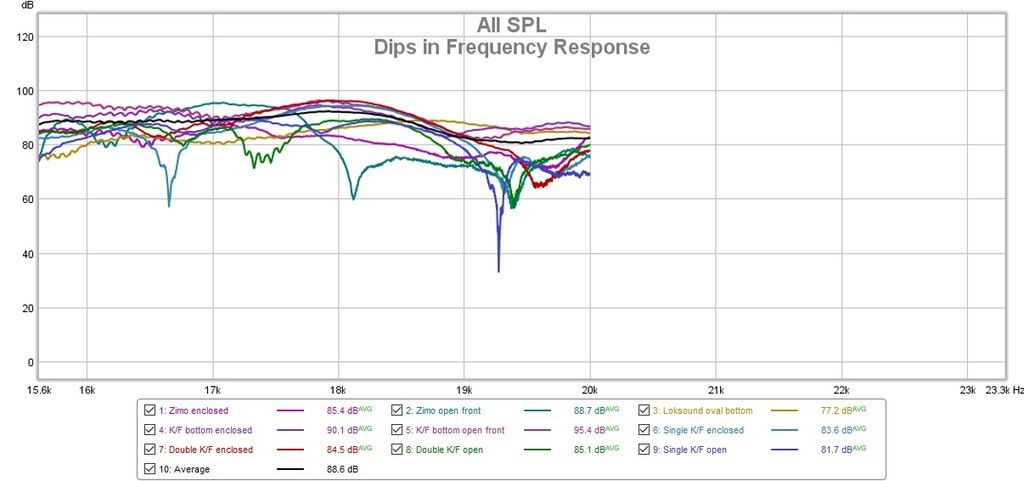
All speakers in the enclosed tender.

All speakers in the open front tender.
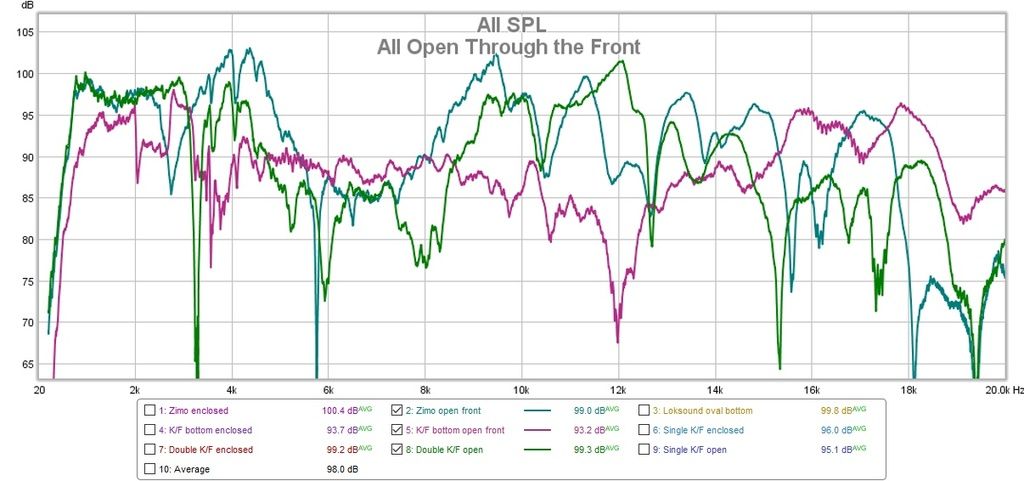
All speakers open through the floor.
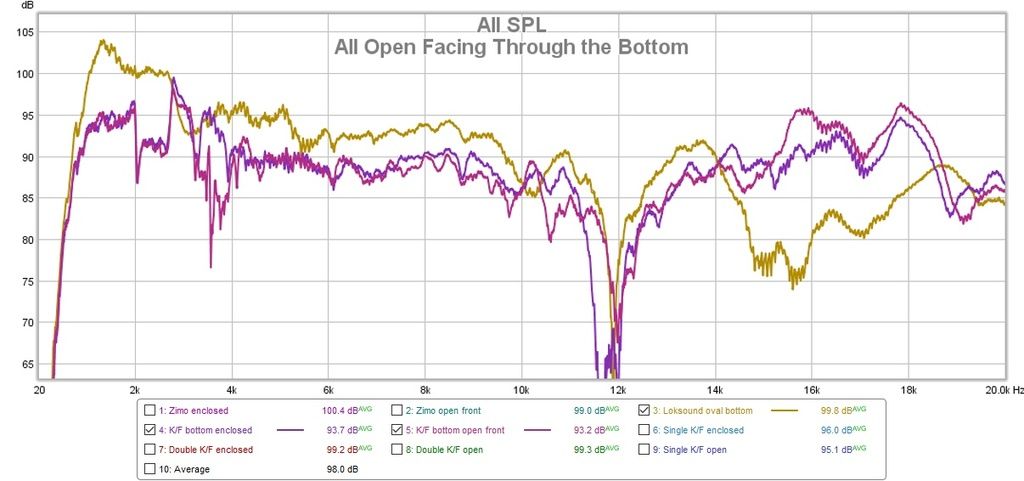
All Speakers bottom end or "bass response"
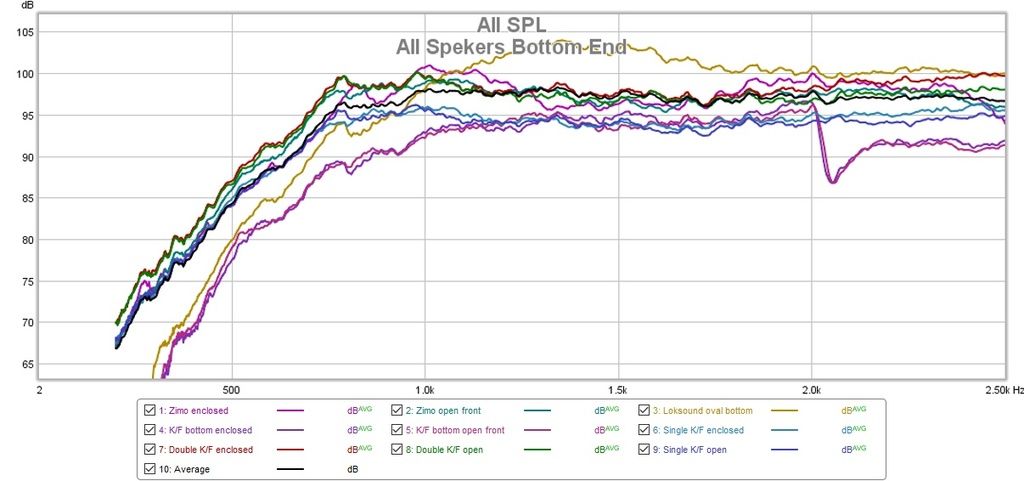
Above Average bottom end.

Here are some of my observations.
In the installations that play through the bottom, there is a giant hole at 12KHz. In same cases a drop of over 35dB. Consider that a drop of 10dB means half the volume. That's a huge hole. Also the three most flat responses, which is considered ideal, came from the installation where the speakers pointed unobstructed out through the floor. This could have been predicted I think. It's exactly why speakers are designed with the speakers facing the listener as Peteski and I discussed before.
In the installation with the two speakers there is some funky stuff going on. My guess is that since the two speakers are mounted 180 degrees out of phase (same as wiring one backwards if they were side by side facing the same way) and the sound is bouncing around inside before finding an exit, that there is some cancellation going on there (as predicted by John). It may have a different result if I had the room to put the speakers in phase with each other and side by side. Cancellation is normally more prevalent at lower frequencies but in this case it's happening all over the place wreaking havoc. Basically, as I have installed it, it sounds like crap and could be much better with alterations.
The graphs all show that the more open the speaker is to the outside, be it through the front, or even better, through the bottom, the better the high frequency response. Makes sense.
I find it interesting that the lowest "bass" response came not from the largest speaker (as I would have predicted), but from the two double installations (as predicted by John) and from the tiny singular Sugar Cube. That being said, you can see that it rolls off steadily after 800hz and by the time it reaches 200hz its down about 30dB. The extra extension might not even be audible.
Finally because graphs are just a bunch of pretty lines and can't tell you what something actually sounds like, I did some quick listening with music. The speakers that played out the bottom sounded the best. Any of the ones enclosed were missing a lot of highs (seen in the graphs), the ones with sound allowed to escape through the front sounded better than the enclosed but not as good as the open through the floor (seen in the graphs).
I still have more testing to do but I'm interested in finding the room to get the Sugar Cube pointing out through the floor. As it is it's a little tall.
Craig